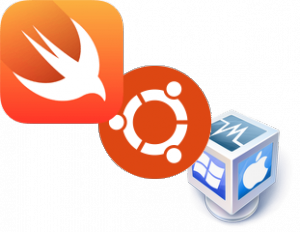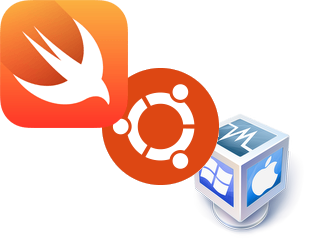In the post Running Swift on Ubuntu Server (on VirtualBox) we installed swift on an Ubuntu Server 15.10 installed in VirtualBox virtual machine and then we have compiled our first swift program, naturally it was hello world.
This time we are going to use the Package Manager provided by Apple to create a real project.
Let’s start our virtual machine and login in it.
When the shell is ready issue the following command to create the directory structure for the HelloWorld project:
gigi@ubuntu1510:~$ mkdir HelloWorld; cd HelloWorld; mkdir sources
At this point we have to create the Package.swift file for our project. You can use your favourite editor, the file shall containing the following code:
import PackageDescription let package = Package( name: "HelloWorld" )

Now move into the sources directory
gigi@ubuntu1510:~/HelloWorld/ $ cd sources
and create the main.swift file containing the code
import Foundation
import Glibc
print("Hello World!")
Save the file and go back to the project root directory
gigi@ubuntu1510:~/HelloWorld/sources $ cd ..
It is time to build the HelloWorld executable
gigi@ubuntu1510:~/HelloWorld/ $ swift build
now your HelloWorld program should be built. Try running it, note that the “swift build” command creates a complete directry structure inside the root of your project. The directory is invisible, its name is .build. So issue the following command to execute your progam:
gigi@ubuntu1510:~/HelloWorld$ .build/debug/HelloWorld Hello World!
Let’s add a new class to the project, go to the sources directory
gigi@ubuntu1510:~/HelloWorld/ $ cd sources
and create the classA.swift file with the following code:
import Foundation
class classA{
var prop1: Int
var prop2: Int
init()
{
prop1 = 1
prop2 = 2
}
init(val1: Int, val2:Int)
{
prop1 = val1
prop2 = val2
}
func printClassA()
{
print("prop1 = \(prop1)")
print("prop2 = \(prop2)")
}
}
The above class have two initializers (which initiliaze the two properties) and a function which prints out the two properties.
Now modify again the main.swift file, the new content will look like the following:
import Foundation
import Glibc
var instance: classA = classA()
print("Hello World!")
instance.printClassA()
Move back to the project root
gigi@ubuntu1510:~/HelloWorld/sources $ cd ..
and build the executable
gigi@ubuntu1510:~/HelloWorld$ swift build Compiling Swift Module 'HelloWorld' (2 sources) Linking Executable: .build/debug/HelloWorld gigi@ubuntu1510:~/HelloWorld$
Run your application
gigi@ubuntu1510:~/HelloWorld$ .build/debug/HelloWorld Hello World! prop1 = 1 prop2 = 2
Really this is not a very complex application, but, at this point we are using the right tool to handle more complex projects.
Gg1
